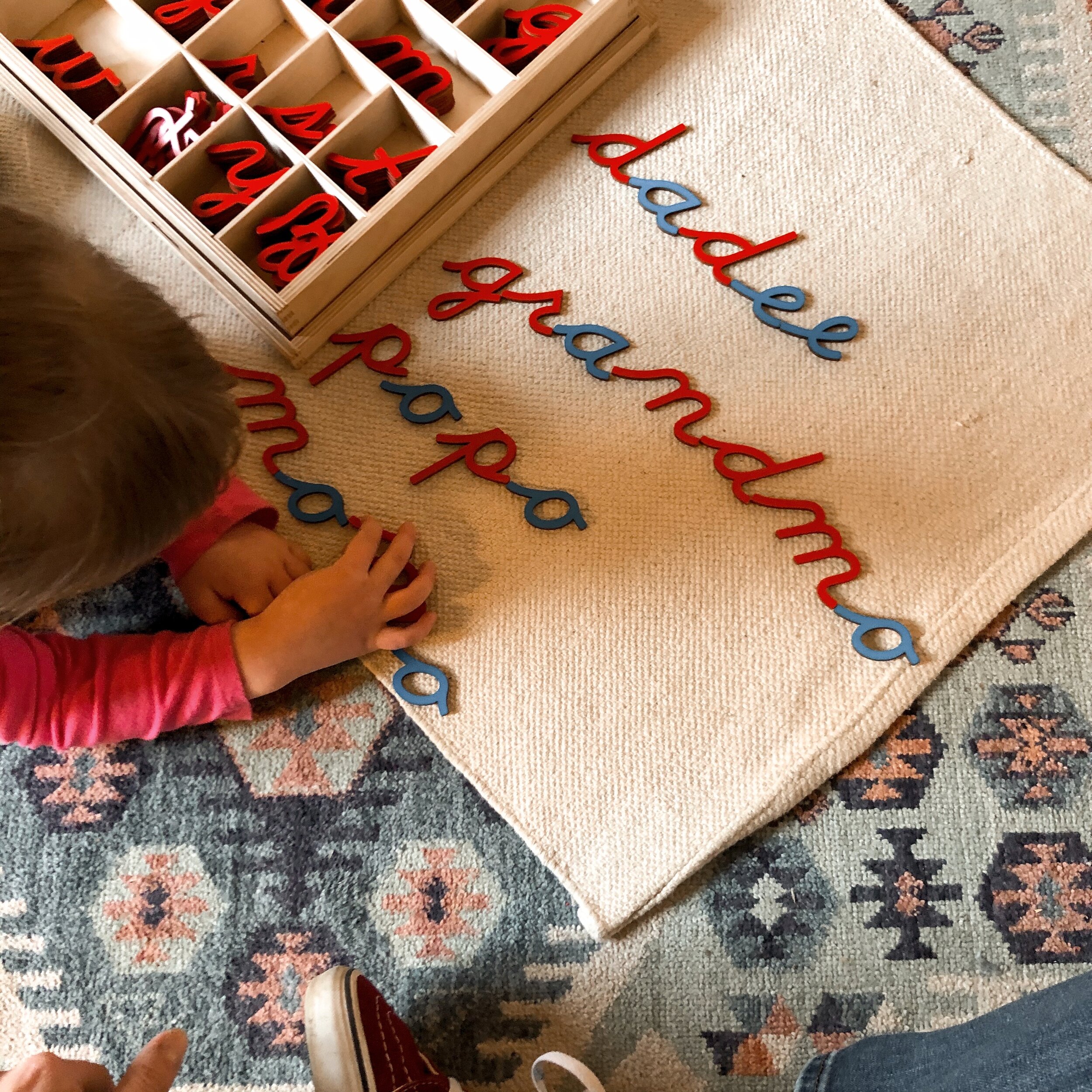Montessori Language: Cursive First
/Within the language curriculum, there is a lot of freedom. Did you know that Montessori only created THREE Montessori language materials? Yep. The sandpaper letters, the movable alphabet and the metal insets for handwriting preparation. She talked about reading games, oral language games and songs and poems many times throughout her writing, but she only created these three materials. In a phonetic language, like Italian, these materials, along with reading games, would be all you need. But English is definitely not phonetic. Cultural adaptions have been made and language, like practical life, is based on where you are in the world and what language is being acquired. I thought it would be helpful to launch a series to help parents better understand the Montessori approach to writing and reading since the information available can be overwhelming at times.
Today, I want to chat about cursive. In the schools I have taught at (one private, one public), cursive first was the convention. The sandpaper letters and movable alphabet were in cursive. These materials are for writing, both authorship and handwriting. This is definitely a personal preference. If you have materials for writing in print, that’s totally ok. Here are a few reasons behind my preference for cursive first.
Every letter starts in the same place! When a child traces the cursive sandpaper letters, each letter begins at the bottom left and moves right. With print, letters begin all over the place—some at the bottom, some at the top. Cursive first supports correct formation of letters by taking some of the guesswork out for children.
There are less letter reversals. Because each letter begins in the same spot, there is less room for writing letters backwards. It almost completely eliminates the b,d,p dilemma.
Children are submerged in a print heavy culture. We know that because of their absorbent minds, children are taking in everything around them, which, in our society, is a lot of print. Cereal boxes, road signs, t shirts. This means that when we teach cursive first, they already have a strong foundation in print and it never has to be taught. They just pick it up. If we teach cursive later on, it can make it more difficult to acquire and can be frustrating to learn.
So, you may be thinking: how will they read in print if they are introduced to the sounds with cursive sandpaper letters? The answer: their absorbent minds! Like I said above, they are submerged in print. They see it multiple times a day. Children are also in their sensitive period for language. This means children not only have an unlimited capacity for vocabulary, but they have the ability to learn multiple languages with ease. Learning to write in cursive and read in print may seem difficult for an adult, but a child in their sensitive period for language can read in print with ease, even as they work with writing materials in cursive.
If you are working on handwriting at home and want to support cursive, I highly suggest you brush up on your own cursive handwriting. Let your children see you writing a grocery list or on the white board on the fridge in beautiful, careful cursive. Remember, children want to do what adults do. Modeling cursive may be just the thing to spark their interest.






